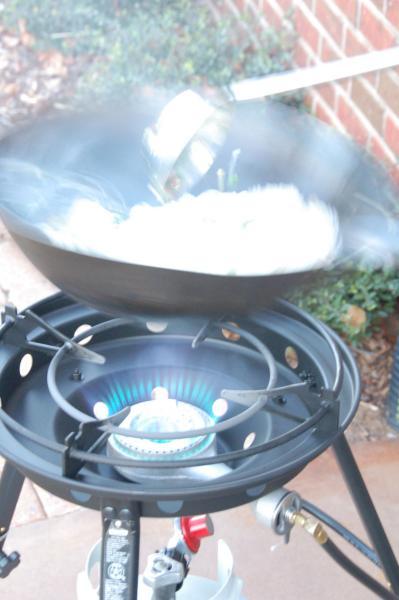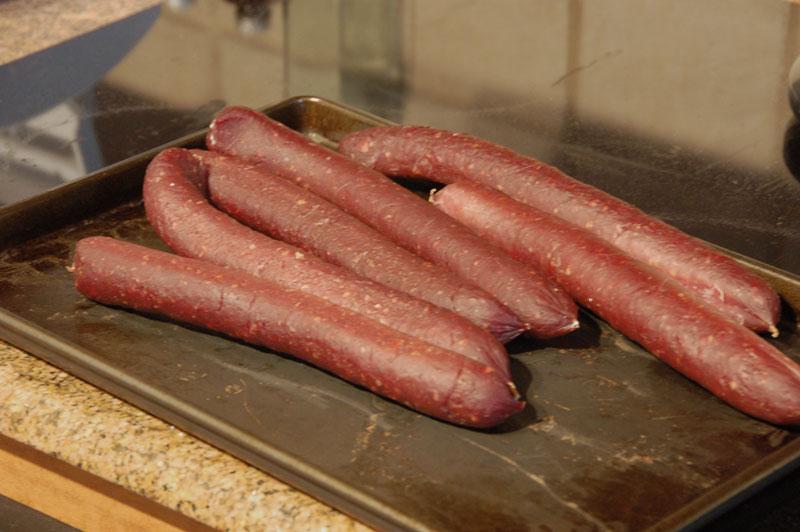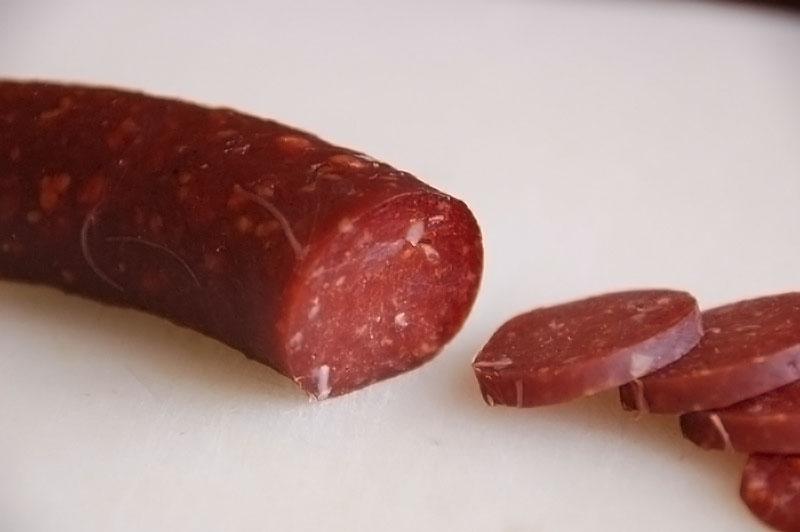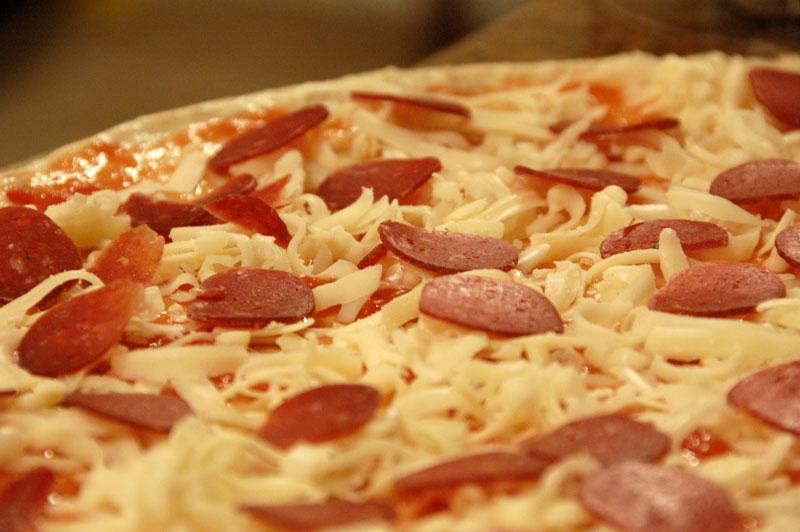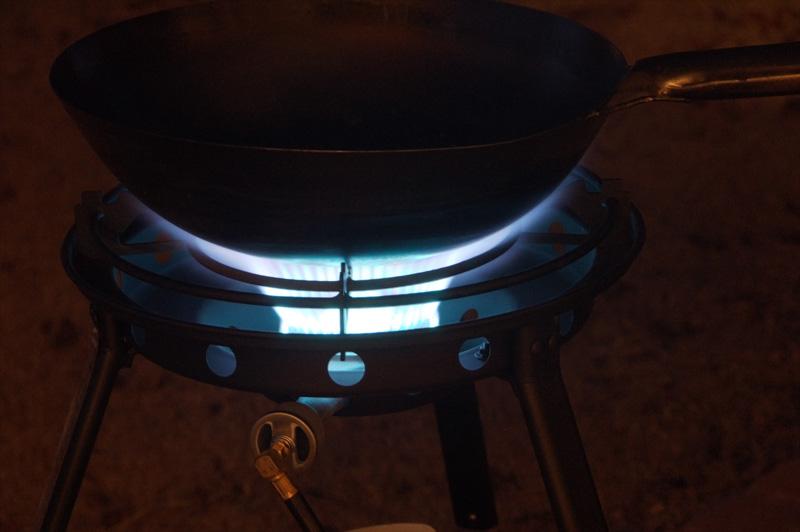-
Posts
10,190 -
Joined
-
Last visited
Content Type
Profiles
Forums
Store
Help Articles
Everything posted by Chris Hennes
-
I just picked up a bottle of the Yamazaki 12 (not strictly a Scotch of course, but that's the flavor profile...): it's fascinating stuff. Very rich, with a complex flavor sequence as you first taste it. I'm looking forward to trying the 18 next, I think. I'm a big fan of the Laphroaig 12, so it sounds like I should play around with the 18 as well. Then there's that bottle of Macallan 25 just sitting there biding its time...
-
Which is completely fascinating! Why is a potato preferentially absorbing salt, but not other flavor molecules? Is it that those molecules are too large to penetrate the potato quickly and would eventually be absorbed, but you take the potatoes out before that happens? And is it unique to the potato, or to starches (pasta, etc.)?
-
That's really what I'm trying to get at here: how is it that potatoes can absorb excess salt, but don't absorb the other flavors? If you put in a potato, let it absorb salt, then take it out, how is it that the potato is not also absorbing other desirable flavors?
-
It seems to me that the question is not "does adding potatoes to soup decrease saltiness" since I agree with Jaymes and Blether that it clearly does: to me the real question is, "does adding potatoes decrease the saltiness MORE than adding any other non-salty item." For example, if you add water to your soup, you will decrease the salinity. Is adding a potato any different? Does salt have a tendency to accumulate in a potato? It seems to me that all you are doing when you add a potato is effectively diluting your soup. If you then proceed to remove the potato, of course the salinity will have decreased, in the same way that if you added water, stirred it up, and then removed that amount of liquid would result in decreased salinity.
-
Sorry, no IR thermometer, so I can't translate those BTUs into actual heat transfer. A wok hits the smoke point of peanut oil in 3-4 seconds from a room-temp start when it's on high, if that tells you anything.
-
Over at the Cooking Issues blog Dave Arnold has a post up on soaking and cooking mushrooms in which he basically comes to the conclusion that not only do we WANT the mushrooms to absorb water, we should also crowd them in the pan when cooking. This flies directly in the face of the traditional cooking advice about mushrooms, but Dave's results show that the soaked and crowded mushrooms absorb significantly less oil and ultimately taste better:
-
I actually made fried rice tonight using last night's leftover rice, and again using a recipe from Breath of a Wok. Action shot, courtesy of my wife: I like fried rice pretty much everywhere, but this was indeed superlative. It was also gorgeous: the recipe is one from Ming Tsai and includes some lop chong (Chinese sausage), which give nice flecks of red along with the green from the scallions and the yellow from the eggs. Alas, we didn't slow down to take a photo of the finished dish: it went from the wok to our plates to our stomachs in short succession .
-

Curing and Cooking with Ruhlman & Polcyn's "Charcuterie" (Part 6)
Chris Hennes replied to a topic in Cooking
Peperone (pp. 185–186) I finished the peperone from the book last week, and after a week vacuum-sealed in the fridge it's ready to go—it is fantastic. I ended up using a spicy smoked Spanish paprika, which is the dominant flavor in the sausage. I used a very lean bottom round which I then meticulously trimmed of surface fat before grinding: my guess is that the fat content here is under 5%. While I was initially suspicious of this, Polcyn and Ruhlman have never been shy about including fat, so I figured maybe they had a reason. I think this was a good choice, in particular because I wanted to use the peperone on pizza, and high-fat salume on pizza tend to make it greasy. I don't find myself missing the fat here at all, even when eaten plain. Really, marvelous stuff, maybe my favorite recipe so far from the book. I don't think I'd change a thing. I cured this for 11 days in my wine-fridge curing chamber. I did not add water to the salt pan this time: the humidity kept a reasonably constant 77% during the whole process, using just salt to absorb some of the moisture. The temperature stayed between 55°F and 60°F. And sliced: note how little fat there is. And finally, the peperone in its natural environment -
I contacted the Florida Department of Health and this was their response:
-
Woo! Inaugurated my new toy tonight: got me a Big Kahuna— According to some sources this guy is over 50,000 BTUs (the packaging doesn't actually say) and DAMN it looks and sounds like a jet afterburner. Took under a minute to cook dinner tonight (Spicy Garlic Eggplant from Grace Young's "The Breath of a Wok") so I think I'm off to a good start. Anyone else getting one of these puppies for Christmas this year? Edited to add: OK, actually the BTUs are listed on the back of the box: it says 65,000.
-
When you all (or "y'all" depending on where you live) make chicken and dumplings, is it more like a soup, or more like a stew? I've never really questioned it, my mother always made hers more like a stew so I do too, but some of the descriptions above definitely sound more soup-like.
-
Yet again the good folks at Slice have taken one for the team (actually, two) and gotten their hands on a couple of these "new, improved" pizzas, which are apparently available in Dominos' hometown of Ann Arbor, Michigan. Their basic verdict is that the sauce is improved and doesn't actually seem sweeter, the seasonings are applied on the outside of the crust and are near-imperceptible, and no difference in the cheese was evident at all. So, the pizza overall is better, but probably still not good enough to actually eat (unless you are a drunk and/or fiscally-challenged undergraduate, in which case, carry on...)
-
I guess when I hear "80C for 8 to 12 hours" my mind automatically goes to SV because then it's simply matter of setting the circulator and coming back tomorrow: it seems to me that's the simplest way to achieve the desired effect. And I'm sure you're right about the aging: in particular, I don't think that I have personally ever had a confit aged more than a week or so, and only that one because I made it myself. But Wolfert suggests in her book and here on the forums that a pleasant flavor shift occurs if you age the confit, so by "traditional" I basically meant "the Wolfert Way™". I'd love to know what chemical process occurs in the confit over that aging process. The theory seems to be that it depends on a small amount of oxygen permeating the fat layer, which is why aging in the SV bag doesn't yield the same result. Not that I have tested that on my own... has anyone?
-
According to this article at Slice, Dominos is changing basically everything about their pizza at the end of December. They are switching to a garlic crust, making the sauce sweeter and spicier, and changing up the cheese blend. I know there are a lot of Dominos haters here: are you going to give them another chance? Or did you think their old sauce was already too sweet? Anyone willing to confess to liking the old pizza? (I've certainly eaten my share, even once I left college!)
-
So all that would be required to replicate the flavor of traditional confit is then to cook the protein sous vide to the appropriate temperature, then cover with fat and let it age for some length of time? No need to even include fat in the SV bag, right, since it doesn't get absorbed and apparently doesn't affect the flavor through any other sort of alchemy? nathanm, you say "Fat molecules are way too large to penetrate into the meat": can you quantify this? How large are the fat molecules compared to the "meat pore size" (or whichever term is appropriate here)?
-
I wonder if it just comes down to needing to handle the meat differently if you salt first? I'm with paulraphael, I always salt first, and use less than they do, and my burgers look more like the "good" burger in their study than the "bad" one. Certainly they aren't hockey pucks! I think by attempting to be "scientifically rigorous" and holding all other variables constant, they are coming to a misleading conclusion. The point is, if you salt first, you can't hold all the other variables constant, you have to treat the burger differently. You use less salt (IMO) and you barely work the meat at all, since the additional protein bonds make the meat stick to itself much better without the need for firmly pressing it together.
-
Is this the one you are looking for? http://khymos.org/pairings.php
-
You are all much more ambitious than I am. I cut up a couple of big Idaho baking potatoes, toss them in salt, melt butter in the bottom of the Dutch Oven, and put the potatoes in. I put the chicken on top of them, and pop it in a 425°F oven until the chicken is done. I take the chicken out to rest and stir up the potatoes, then put them back in and crank the oven to 550°F (as high as it will go). When the chicken is done resting I pull out the potatoes, which have begun to caramelize on the surface from the chicken drippings. The potatoes are far overcooked, at least if you like your potatoes al dente, but they have absorbed a ton of the chicken flavoring and taste fantastic (IMO, YMMV, etc.).
-
I've always had good luck serving a fresh homemade angelfood cake: for those who have only ever had the store-bought or made-from-a-box variety the real deal is revelatory, and can be served with all manner of fruit-based toppings (with whipped cream on the side for those who aren't allergic, perhaps).
-
Are they more fragile than those made with reconstituted masa harina?
-
Brownies. Undercooked? Still good. Overcooked? Still good. Beat too long? Still good. Beat too short? You get the picture.
-
rancho, that's a hell of a toy: it's FAST! Chris, have you had any luck getting the tortillas thinner than your "gorditas" from last time? Do you know what's driving the thickness?
-
You crazy kids and your subjective "taste" results. We need some damned numbers!
-
Great experiment, ChefCrash. And like all great experiments, one that leads to more questions. As nickrey points out, the potato starch issue is one. What other methods are available for measuring salinity? I have no experience in the field, but maybe some saltwater aquarium people would know. Are there test kits available at aquarium stores? I would certainly expect the potatoes to absorb salt simply on the basis of a system's tendency to equalize concentrations: the potatoes go in with a near-zero salinity, and the system is going to act to increase that salinity and decrease the salinity in the water until an equilibrium is reached. In that sense adding potatoes is no different than adding and then removing an equivalent quantity of water. Or chicken. Or whatever. Is there any compelling reason to believe there is some special property of the potato that would somehow increase its ability to absorb salt, above and beyond any other substance?
-
Well, that's the only reason I do it, anyway. I can't imagine what other purpose it would serve... added protection against leaks sticking to the pan?


